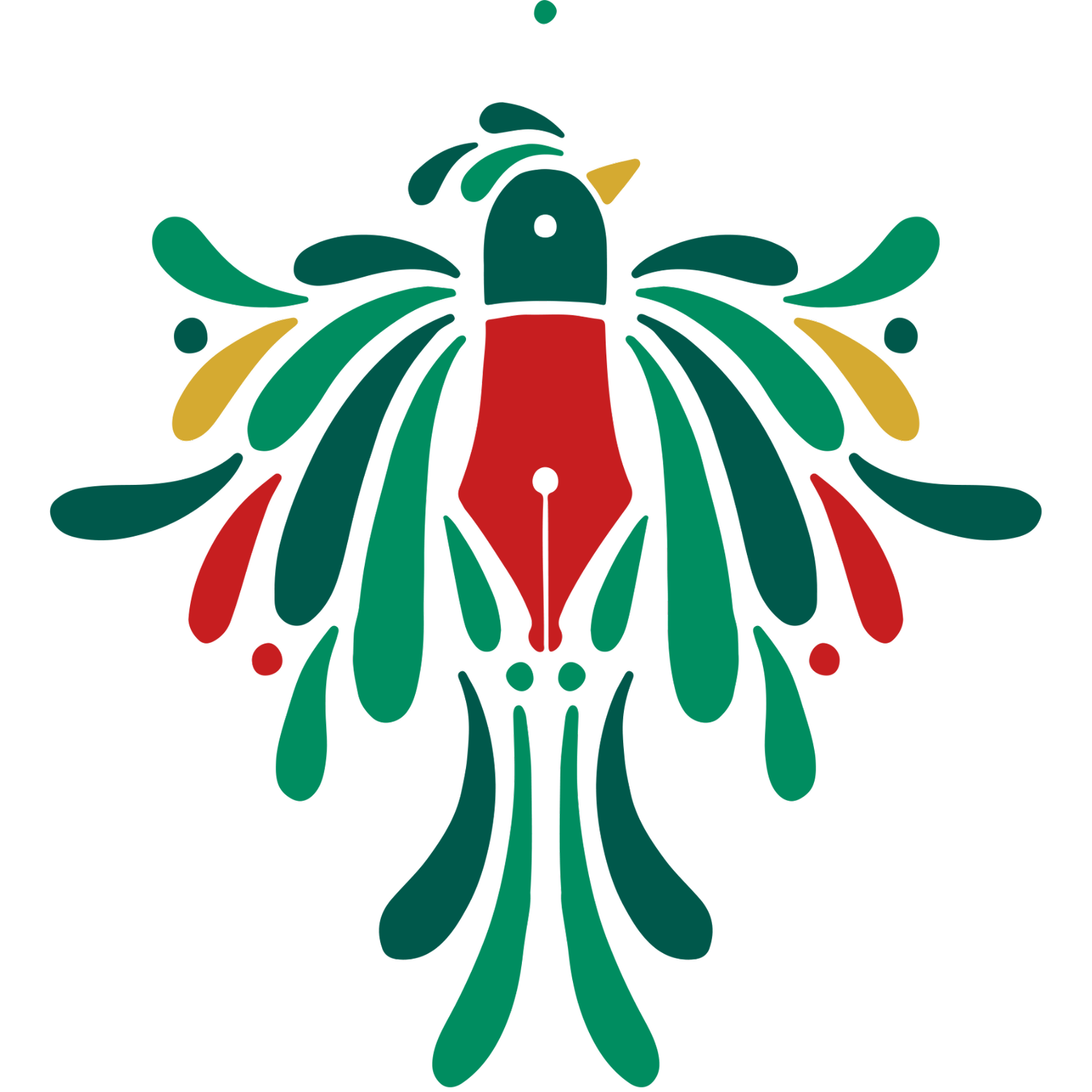

Educator. Writer. Photographer.

PEDACITOS DE MI
Autobiography


1988
Diáspora Concebida
[…] a Coyote drifted my mother and me across Mexico. ¡Apúrense! Darkness. ¡Sigan caminando! The stench. ¡Chingada madre! The rats. ¡Que se apuren! The excrement. La jaula de Oro—The AmericanDream. The sewage tunnels dumped us in San Isidro. La Migra arrested us: stripped us of our clothes, a routine check for drugs, a mug shot, fingerprints archived, another full body search, and a health screening. My father bailed us out. Un total de mil dólares. When we missed our court hearing, we started our lives as undocumented people in Los Angeles. Read More.
1995
Sonando en Inglés
[…] 'your wife and your oldest son have ten days to leave the country voluntarily or be deported right now'. The ten days we had in the US became eight... six... We sold everything. Ni camas teníamos. Four. My father decided to stay in the US mientras las lágrimas suicidas no dejaban de fluir. Two. My mother, brother, and I began our exile. One. We were in Guatemala, en un país donde no teníamos nada. Read More.
1999
Ala Puchica
It took four years for my mother and me to get a pardon letter from Los Estados Unidos. I thought to myself—I was finally going back home. By then, Guatemala City had changed me. I had undergone a new acculturation—a reverse assimilation into the Guatemalteco culture. I became accustomed to el voseo, el uso del uste, los jocotes, […]. Read More.
2008
+Social Change
Now I have a double self, a Mestiza consciousness, a transnational identity created by the deportation delirium of a nation that sees banishment as punishment; of a nation that upholds citizenship as membership to certain inalienable rights while denying others their humanity because of non-citizenship. Read More.

ENGAGED PEDAGOGY
Educator
Creating Positive Change
In 2011, I started my career as an educator. Since then, I have developed a strong passion for community development and social impact through the educational empowerment of underserved and underrepresented youth, allowing me to create positive social change through my work. I am an educator in Oregon, actively empowering and fostering student growth.
Education:
2011 - Bachelor of Arts in Ethnic Studies and Español from the University of Oregon.
2014 - Master's in Bilingual Creative Writing from the University of Texas at El Paso.
2019 - Master of Teaching at Pacific University.
Education has been crucial in my life as it has given me the tools to understand my past and move forward. Through education, I have been able to reinvent myself. I can now share who I am with the confidence that people will look beyond my skin color and hear beyond my accent to see my soul's content. Now more than ever, I believe that Literacy + Critical Thinking = Positive Social Change. With this understanding comes my commitment to becoming a positive role model who fosters all my students' intellectual and moral development. I have demonstrated exceptional leadership skills throughout my career, collaborating with diverse teams to develop curriculum and youth programs. I keenly understand the importance of inclusive decision-making and actively strive to incorporate diverse perspectives into my work. My work constantly evolves as I learn from my coworkers, colleagues, and students.
+Youth Development
Since 2015, I have dedicated my work to supporting underserved and underrepresented youth in Washington County, Oregon. I have collaborated with various programs in multiple capacities. Click here to learn more and explore the programs I’ve been involved with.
Learning Designer
My pedagogical focus on self-reflection and social justice drives me to create student-centered materials. My portfolio highlights my expertise in analyzing, designing, developing, implementing, and evaluating instructional strategies, curricula, and material designs. Click here to explore my work and learn more.
LitSpark Studio
I started LitSpark Studio to provide educators with adaptable, student-centered materials that celebrate diversity, foster creativity, and empower teachers to meet the unique needs of every classroom. Click here to explore and transform your teaching today!

Rethinking Our Values
To have culturally responsive classrooms means that, as educators, we acknowledge that our classrooms are more diverse than ever. Making that acknowledgment is not enough to create a thriving environment for students, let alone students of color. We must also be proactive in celebrating how culturally diverse our students are. To be an educator in the 21st Century means we must provide our students with opportunities to self-reflect on their skin color, cultural backgrounds, multilingual/multidialectal heritage, English proficiencies, personal experiences, and family histories. Educators also need to recognize that every classroom is different because it has different students with different experiences, meaning that our pedagogical strategies must constantly change to fit the students we teach. Students must be offered time and space to explore the self and the other. Looking closely at our humanity, we will find more similarities than differences.
-
Students must be allowed to write in their own voices or allow time and space for them to explore and find power in their voices and ideas.
My Language Arts teacher in the 10th grade was the first to push me to explore my voice and the stories I wanted to write about. She was the only one who saw past all my grammar mistakes and saw my creativity and potential as a writer. Giving me agency, power, and confidence.
-
Too often, English language learners have been overlooked and underestimated in classes where they must perform in a language they have not mastered yet. Because they cannot do so, they are victimized to the point where assignments are modified for them in a way that does not help the student. Other times, they are given full points for work that should be revised and worked on further to ensure learning targets are met.
Educators must remember to see English learners as individuals who are in the long process of mastering a second or even a third language. It would help if educators did not view an English language learner as having a problem that must be solved as soon as possible. Being a language learner does not mean a student is not a critical thinker.
I was an ESL student in middle school, and it took me over six years to get to a place where I was comfortable sharing my writing. It took only one teacher to see past my grammatical mistakes and judge my writing on my ideas to motivate me to keep focusing on developing my writing. Unfortunately, not all students are this lucky—they are discouraged at a young age, and their ideas are not fostered or developed because the focus goes on grammar and spelling.
Fortunately for all multilingual students in Oregon, House Bill 2056 drops the English mandate in core classes. Now, students can show proficiency in any other language. Many school districts now offer core Spanish classes to help students graduate high school in four years. In the past, these students were forced to stay in high school for five or even six years.
-
The umbrella terms Hispanic, Latino, or LatinX are misleading because they strip all the diverse countries, cultures, and language heritages that existed before Spanish or English were imposed so that what is left can fit neatly within any of those terms.
In many of my classes in high school and my undergrad. It felt like some of my professors could only see parts of me. The only details they allowed themselves to see were my skin color and accent. The rest of my identity was a mystery to them because they never took the time to know more about me.
-
Code-switching and Spanglish (Black Vernacular in other areas) are essential parts of the language identity of young people of color. Often, this is viewed as a problem instead of an innovative and creative way of using language. Educators must emphasize audience, registers, and the power of using standard English.
I teach my students the power of Standard English for academic writing and the power of their voice in personal narratives.
In the US, we have 24 dialects of American spoken English.
According to the US Census Bureau, the US is also home to over 350 other languages. With these many languages, I teach my students the importance of audience and how to use registers.

Building a Teaching Community
I became an educator because representation matters. Our educational system makes it difficult for individuals who look like me and sound like me to become proactive members of an educational system that wasn’t created for me (or people of color). Quality, student-centered, and teacher-friendly learning materials are challenging to get if you work for a small district. Educators have few options; many find themselves scavenging free resources or buying materials online. Let’s consider the following: if we look at Oregon and zoom in to a district, then choose a high school, zoom in further to the English department, and take a look at the teaching materials being used—we will find significant discrepancies, the lack of a common vision, aesthetic and rigor. Even if a district offers materials, curriculum, or a textbook, teachers have no agency to make significant modifications to fit the students in their classroom. Then, those same educators must supplement, finding themselves in the vicious cycle from the previous example.
I propose that districts provide their educators with structures, scaffolds, and a library of editable materials. Educators must have the power to choose, edit, provide support, and create extra scaffolds that the original materials did not have because every classroom is different. Not having access to quality teaching materials drove me to create my own. Building materials that are not only student-centered but provide teachers the agency to change and modify is my contribution to the teaching community.
-
The biggest challenge I’ve had to overcome as an educator has been facing a lack of strong educational materials that I could manipulate to not only make them fit my teaching style but to have a better impact on my students.
-
I design and implement the materials and curricula I create with the idea that students and teachers must be actively engaged and aware that everyone’s input and ability to adapt, think, and grow are part of the teaching-learning dichotomy.
-
Scaffolds and Chunking are strategies I have been implementing for a few years. Designing interactive reading materials involves incorporating these into the structures and routines of my everyday class.
Since I started, I have seen quiz scores increase for reading comprehension. I have also seen more students turn in final essays that have all the components needed.



Read along.
Nudo de la Soledad
LIKE EVERY MONDAY at six am, old and greedy Doña Matilde tiptoed herself to look through her front door’s viewing window to judge how sunny or rainy the day would be—whatever the verdict, she would still be her grumpy self all day long. While looking out, she saw something that wasn’t supposed to be there. She immediately unlocked her door and walked out to inspect further. As Doña Matilde stood before it, her anger was contained in a frozen frown. She didn’t blink. She huffed through her nose, and she pursed her lips, while thinking: it's two feet away. Why was it two feet away? And why the front door? She immediately blamed Las Cucarachas, who lived across the street en el barrio called El Palomar. Because Las Cucarachas never kept their animals or their pesky little children in a cage, they were responsible for this horrendous act of vandalism.
Dead.
It's dead; it's finally dead, she thought to herself. She recalled that for years, that brown mutt had scattered all her trash while it searched for something to eat. Doña Matilde slingshot rocks at the mutt every time she saw it. Other times, she screamed at the mutt to stay away from her property. She even waited for hours with a bucket of water to pour at the brown mutt when it passed by. What she detested the most was to clean up after it because the mutt pooped only at her front door. One night, the smell of rotten flesh woke her up. After an hour of looking around for the cause of the stench, she found the brown mutt sleeping at her front door. Doña Matilde barked and growled at it with her broom as the mutt ran away. It probably had been in the Landfill, where it got all smelly. After washing her front door many times, it wasn’t until a week later that she finally got the foul reek out of her house.
-
All of those problems seemed like small inconveniences compared to what was in front of her now. With a deep sigh, Doña Matilde stared at the lifeless mutt with loving eyes. But soon after, her face was filled with hatred and disgust. She asked Jorgito, the drunk of 13th Street, to get rid of the carcass. He refused because she wouldn't pay him what he wanted.
On Tuesday, she asked the local kids to dispose of the inflated carcass. But the kids refused like she always did when one of their soccer balls got trapped in her house, and she wouldn’t return it to them.
On Wednesday, she was desperate, constantly looking through her window to see if it was still there. She didn’t know who else to ask since she had more enemies than she had friends. Doña Matilde was finally accepting that the carcass wasn't going anywhere, and then she remembered that tomorrow was trash collection day.
By Thursday morning, she was waiting by the door with her mouth and nose covered. When the trash collector stood before Doña Matilde, she got excited, and a smile almost wagged across her face with the thought that the dead mutt would finally be carried away in the "costal" over his shoulders. But like the others, the trash collector refused to carry away a mutt that had been dead for a few days. That night, again, Doña Matilde couldn’t sleep obsessing over the dead mutt and how it made her hate all living things.
On Friday morning, as she caught the scent of her burned eggs—Doña Matilde got the brilliant idea to cremate the mutt’s carcass, and that evening, she did. The smell of burned hair made people flood the street to see what was happening; most of them thought someone was being burned alive. As people walked by, the sight of Doña Matilde pouring more gasoline over the dead mutt mesmerized them. Other neighbors called her loca, crazy old hag, tonta, and even a witch—but she didn’t care. Once all the smell of burned hair was gone, the meat started releasing a pleasant smell of carne asada, which made some of the witnesses hungry. But after a while, the smell of burned meat scared the few remaining spectators. For a few hours, Doña Matilde poked the carcass with a stick to ensure everything burned. When only the ashes and some of the larger bones remained, she swept them into a pile.
A few months ago, someone gave her a black garbage bag. Doña Matilde didn’t remember who, because she didn’t care. She was saving it for a special occasion, since it was thicker than any other bag she ever owned. With her hands, she carefully placed the bones and the ashes into the black plastic bag. After methodically collecting everything, Doña Matilde carried the black bag as if it were a baby, and placed it next to her bed. That night, for the first time in decades, Doña Matilde slept deeply with the notion that she wasn’t alone in her home anymore.
Click here to see other publications and current projects.

MICRO MOMENTOS
Photography
Every time the shutter closes and an image is written to the SD card, it captures an instance that will never happen again. Composing a photograph allows me to show people how I see the world. Through photography, I can recreate the memory that someone has overlooked or forgotten. Photography is where I remember how fragile our humanity is.
A Pixel’s Graveyard
Through the art of photography, I have been able to capture micro-moments that are now recorded forever. If you want to see some of those moments, follow the link below.
La Abuela Chronicles
The Abuela Chronicle was a way of getting to know La Abuela. I took many photos of her mainly because I needed to be creative about it, as she did not like her picture taken.
We are composed of millions of random micro-moments that we usually label as memories. You can visit my Instagram feed to see what I have experienced.





























